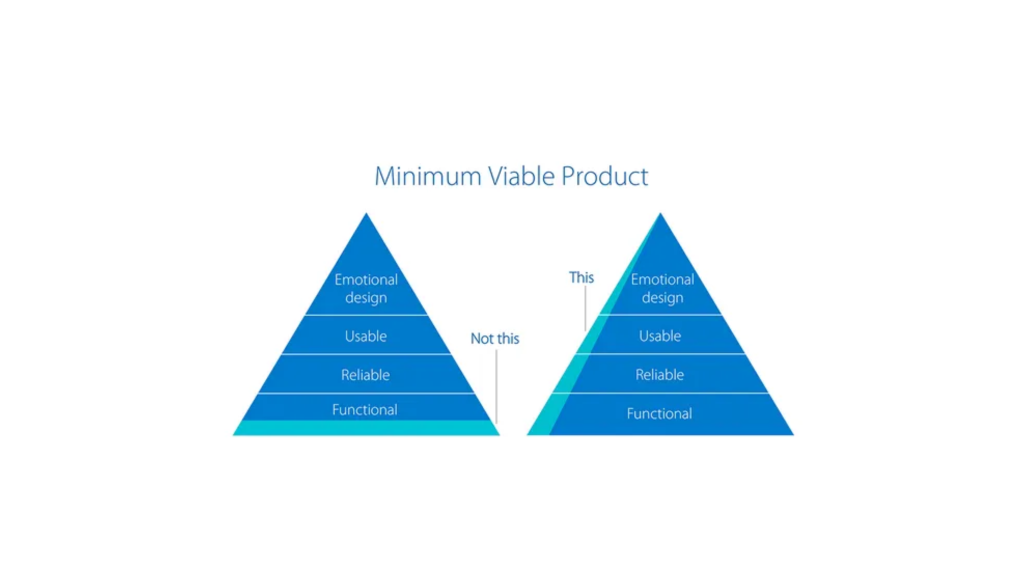
Crafting A Roadmap For MVP: A Step-By-Step Guide
Creating a Minimum Viable Product (MVP) is a strategic approach to testing the viability of an idea with minimal effort. It helps product managers identify the most important features to focus on for achieving product success and cater to the needs of target customers. This guide provides a step-by-step approach to creating an MVP development roadmap for any new product idea, whether for mobile app development or another project. With this roadmap in place, you can streamline the development process and increase your chances of success.
What Is A Minimum Viable Product?
A minimum viable product (MVP) is the basic first version with only the minimum features necessary to test its viability in the market. It allows early adopters to test the product and provide feedback on its value and features. The goal of an MVP is to understand the importance of an idea with minimal development effort and gain insight into customer needs and reactions. This allows for the validation of initial assumptions and the ability to improve the product in future iterations through data and feedback.
Why Should You Build A Minimum Viable Product?

It is a known fact that 90% of startups fail for various reasons, such as running out of money, entering the wrong market, and needing more research. However, the risks can be reduced by using the MVP development process. This process starts with general assumptions about potential users and their actions and allows for validation through an iterative build-measure-learn process. By creating a basic product version with core functionalities and testing it with target users, feedback can be collected and used to make informed decisions about the following product development phase. Building an MVP is a vital step in the product development process that helps focus on the most critical aspects of the product.
Immediate Benefits
Building an MVP offers many benefits, including quickly realizing the product’s value and validating previous assumptions. Additionally, building an MVP can:
- Increase the chances of success in the early development stage, boosting the confidence of stakeholders and investors.
- Allow for changes in the business direction of the product based on customer reactions and user value.
- Provide market validation for the product.
- Help set the strategy for monetizing the product.
- Minimize development costs compared to releasing a fully-fledged product.
Checklist For Creating A Minimum Viable Product Roadmap
The following list will outline the essential steps to take:
- Identify actions and understand business or customer needs
- Find opportunities and confidently outline the customer journey
- Create a pain and gain map to determine user value
- Decide which features to include in the MVP
- Develop and launch the MVP Keep in mind that creating an MVP roadmap is not an overnight process, but by following these steps, it can be done efficiently.
Step 1: Identify Business and Market Needs The first step in creating a minimum viable product (MVP) roadmap is to determine the business and market needs for the product. This means conducting thorough research to understand the market pain points and determining the development’s long-term goals and success criteria. This step requires intense analysis of your target market, audience, competitors, and product alternatives, using tools such as Value Proposition Canvas.
Step 2: Outline the Customer Journey The next step is identifying the end-users by outlining their journeys. This includes identifying the target customer by interviewing or gathering information about potential and actual users, determining the critical points of what type of customer they are, and identifying the story endings for the customer when using the product. This information is vital when deciding what needs to be developed first in the MVP.
Step 3: Plan a Pain and Gain Map The next step is to chart the pain and gain map for the user. This will help you categorize the user’s pain points and potential value/gains. This map can be used to decide which features are essential for the MVP and which can be deferred for future releases.
Step 4: Decide on Features The fourth step is to brainstorm and prioritize features for the MVP process. While deciding on all the features, always keep the end customers in mind. Different models can be used to find essential elements such as Opportunity Statements, Job-to-be-Done Framework, and User Stories.
Step 5: Roll out your MVP using the product roadmap. With your MVP ready, the final step is to put it into the world and gather user feedback. Keeping a close eye on critical metrics during the launch is essential to measure its effectiveness. Even if the results aren’t positive, remember that the MVP development process is about testing assumptions and getting honest user feedback while keeping development costs low.
The Next Step
After creating your MVP product roadmap, the next step is to bring it to market and gather feedback. The MVP development process is an iterative building, measuring, and learning cycle. Therefore, collecting data and user feedback to improve the product for future releases is essential. Based on the feedback received, you can determine if the features you’ve included are valuable to your target audience and adjust accordingly. Remember that the ultimate goal is continually improving the product based on user feedback and market needs.
Manish Surapaneni
A Visionary & Expert in enhancing customer experience design, build solutions, modernize applications and leverage technology with Data Analytics to create real value.
Other articles

Manish Surapaneni
Stop Outsourcing Your Ethics, Tech Leaders
Setting up their own ethics committee is a step forward for tech companies, as they are the clear winners of

Manish Surapaneni
How To Beat The Tech Talent Squeeze In 2023: 6 Proven Strategies
In the current economic climate, with rising costs and increased job turnover, one of the biggest mistakes a company can

Manish Surapaneni
How Augmented Human Intelligence Can Enhance Our Lives With Machines
The advancement of technology has simplified our lives. It has also significantly increased our reliance on electronic devices. MIT Media